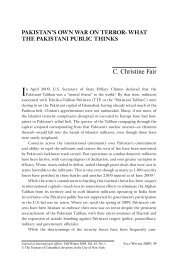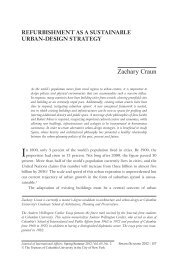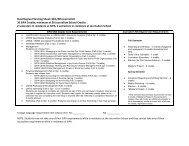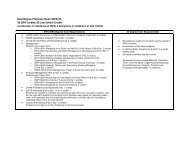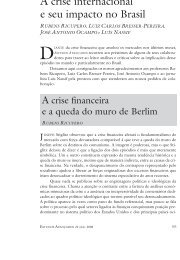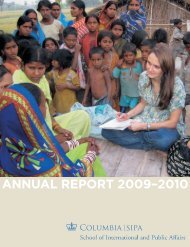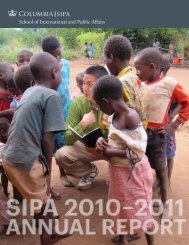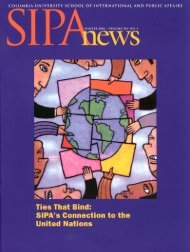Promoting IDPs' and Women's Voices in Post-Conflict Georgia
Promoting IDPs' and Women's Voices in Post-Conflict Georgia
Promoting IDPs' and Women's Voices in Post-Conflict Georgia
- No tags were found...
You also want an ePaper? Increase the reach of your titles
YUMPU automatically turns print PDFs into web optimized ePapers that Google loves.
aggressive messages <strong>in</strong> communities or <strong>in</strong> the media. 177 These <strong>in</strong>itiatives certa<strong>in</strong>ly present promis<strong>in</strong>gexamples of avenues of IDPs’ <strong>and</strong> women’s engagement <strong>in</strong> local communities, but require extensivesupport <strong>in</strong> order to be truly effective.AVENUES OF IDPs’ AND WOMEN’S PARTICIPATION: POLICYMAKINGProcesses around Decision-mak<strong>in</strong>g on IDP-Specific PoliciesDecision-mak<strong>in</strong>g around national IDP-specific policies is one avenue of participation <strong>in</strong> which someprogress has been made <strong>in</strong> <strong>in</strong>creas<strong>in</strong>g IDPs’ engagement <strong>in</strong> policymak<strong>in</strong>g. The three ma<strong>in</strong> examples ofnational policies concern<strong>in</strong>g IDPs <strong>in</strong>clude State Strategy for Internally Displaced Persons – Persecuted,the Action Plan for Implementation of the State Strategy on IDPs, 178 <strong>and</strong> the 2012-2015 National ActionPlan for the Implementation of UN Security Council Resolution 1325. 179 These documents express asignificant rhetorical commitment to <strong>in</strong>creas<strong>in</strong>g IDPs’ participation <strong>in</strong> policy-mak<strong>in</strong>g processes.Moreover, the processes of develop<strong>in</strong>g these documents present some cases of IDP representation atthe negotiat<strong>in</strong>g table, particularly through civil society channels. As previously discussed, women havelargely been more <strong>in</strong>volved through this avenue than have men, but clear gaps rema<strong>in</strong> regard<strong>in</strong>g theirability to exercise <strong>in</strong>fluence through NGOs.Mov<strong>in</strong>g beyond rhetoric to consider concrete actions, implementation of policies concern<strong>in</strong>g IDPs is asecond key element of the policymak<strong>in</strong>g process. S<strong>in</strong>ce the implementation process for the 1325National Action Plan has only just begun, we focus on analyz<strong>in</strong>g the current progress made <strong>in</strong>implement<strong>in</strong>g the State Strategy <strong>and</strong> correspond<strong>in</strong>g Action Plan. These policies seek to <strong>in</strong>crease IDPs’ability to exercise their <strong>in</strong>ternationally recognized right, as displaced persons, to choose among thethree durable solutions: return, resettlement, <strong>and</strong> local <strong>in</strong>tegration. The <strong>Georgia</strong>n government’s<strong>in</strong>itiatives focus on hous<strong>in</strong>g, livelihoods, <strong>and</strong> awareness-rais<strong>in</strong>g on their policies <strong>in</strong> order to promote thisgoal. Despite some progress, an assessment of the implementation to date reveals that the extent towhich IDPs can actually choose among the durable solutions rema<strong>in</strong>s significantly limited. Mak<strong>in</strong>g returnfeasible requires a settlement <strong>in</strong> the Geneva talks <strong>and</strong> is therefore an option that the governmentcurrently lacks direct control over. Resettlement <strong>and</strong> local <strong>in</strong>tegration are thus the two durable solutionsof ma<strong>in</strong> concern here.We consider IDP <strong>in</strong>volvement <strong>in</strong> these processes at two levels: (1) among <strong>in</strong>dividuals <strong>and</strong> families <strong>and</strong> (2)at the national level. At the <strong>in</strong>dividual <strong>and</strong> family level, IDPs’ opportunities to choose among177 Taso Foundation Representative. Personal Interview. March 2012.178 The current document <strong>in</strong> force covers 2009-2012. An updated Action Plan for 2012-2014 is currently <strong>in</strong> the process of be<strong>in</strong>gdeveloped.179 The full name is the “2012-2015 National Action Plan for Implementation of the UN Security Council Resolutions #1325,1820, 1888, 1889 <strong>and</strong> 1960 on ‘Women, Peace <strong>and</strong> Security.’”36






